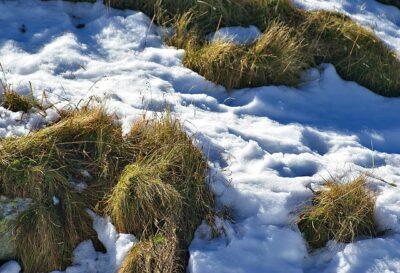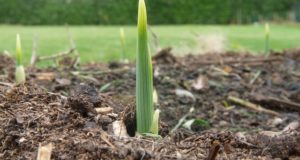Autumn is here and winter is just around the corner. As many gardeners begin to bed down their gardens, some people get concerned about their compost piles. Will a compost pile survive the winter? Can I continue adding compost to my piles? Is there anything special I need to do to ensure I have healthy compost come spring?
Thankfully, winter composting is really not that difficult. Some people use a “set it and forget it” mentality while others put in more work caring for their compost until spring. Here are some tips to help you through your first winter composting:
1. Build up a Shelter and Roof Around the Piles
If you plan on composting during the winter, the most important thing you can do is protect your compost piles. There are many ways you can protect the sides, such as:
- Stacking straw or dried old hay bales.
- Using recycled pallets.
- Stacking cinder blocks.
- Using wooden stakes and old feed bags.
The sides don’t need to be solid, although it would help hold in more warmth. Just this simple effort can make a big difference in how your compost pile looks in the spring. For even more protection you can add a roof. This roof could be recycled old plywood, feed bags, a tarp, etc.
Emergency Survival Seed Bank Provides THOUSANDS Of Pounds Of Food
Keep in mind that if your compost pile is completely protected from all elements, it can dry out easily. You will need to maintain proper moisture in your compost pile with water if it has a roof over it.
2. Add Extra Carbon and Lay Off the Nitrogen
Your compost pile is going to need plenty of carbon in the cold months. Carbon is the “brown” stuff, meaning you will want to use leaves, twigs, wood chips and those types of yard wastes.
Winter composting means you won’t be able to add as much nitrogen to your compost piles as you would have in the summer. It simply won’t be processed quickly enough. Reduce how much nitrogen you put into your piles when it’s cold. Remember that nitrogen is simply the “green” stuff like table scraps. You can also add nitrogen like rabbit or chicken manure, which produces a very beneficial heat as it processes.
3. Mix Up Carbon With Nitrogen
Going back to carbon vs. nitrogen once more, try to layer your browns and greens as much as possible. One giant layer of green isn’t going to compost as efficiently as a thin layer of green with a carbon on top. Even better, give a rough mix to the layers.
Keep some bags of dried leaves by your compost pile and when you add in your scraps, throw in about the same amount of leaves, mixing it a bit with your hand.
4. Chop Up Table Scraps First
Since all of the lovely microbes in your compost pile will slow down in winter, it will take longer for scraps to be eaten. You can help this process by chopping up big table scraps before adding them to the pile.
This New All-Natural Fertilizer Doubles Garden Production!
This only takes a moment but really helps your pile continue the composting process throughout winter. Some people even roughly blend their scraps, just for a couple of pulses and not pureed, and add that to their pile.
5. Switch to Hole Composting
Hole composting is fairly self-explanatory. Instead of making a pile above ground, you dig a deep hole and add compost plus scraps to it. You can simply place a board over the hole to protect it from the elements and trap in heat. This makes for a very happy compost pile and makes your job much easier. Come spring you can continue use the compost pile in that manner or move it to join a pile.
6. Let It Go Dormant
Letting your compost piles go dormant is the easiest route, but then you’ll have to find other uses for your kitchen scraps and other organic material. Perhaps you can feed more scraps to your livestock or give them to someone with livestock (such as pigs) that will eat them. Most people just leave their compost piles as-is. It still would be a good idea to shovel off snow before it melts and throw a tarp over it during heavy rains.
If you don’t have compost piles yet but plan to build some up, it would be a good idea to make shelters for them before you start the pile. You may also look into store-bought or DIY completely enclosed compost bins/digesters. These are nice for people living in urban environments as well.
You also may be interested in:
The Easiest Way To Compost During Frigid Winter Months
What are your winter composting tips? Share them in the section below:
Learn Dozens Of Organic Gardening Secrets And Tricks. Read More Here.
 Off The Grid News Better Ideas For Off The Grid Living
Off The Grid News Better Ideas For Off The Grid Living




